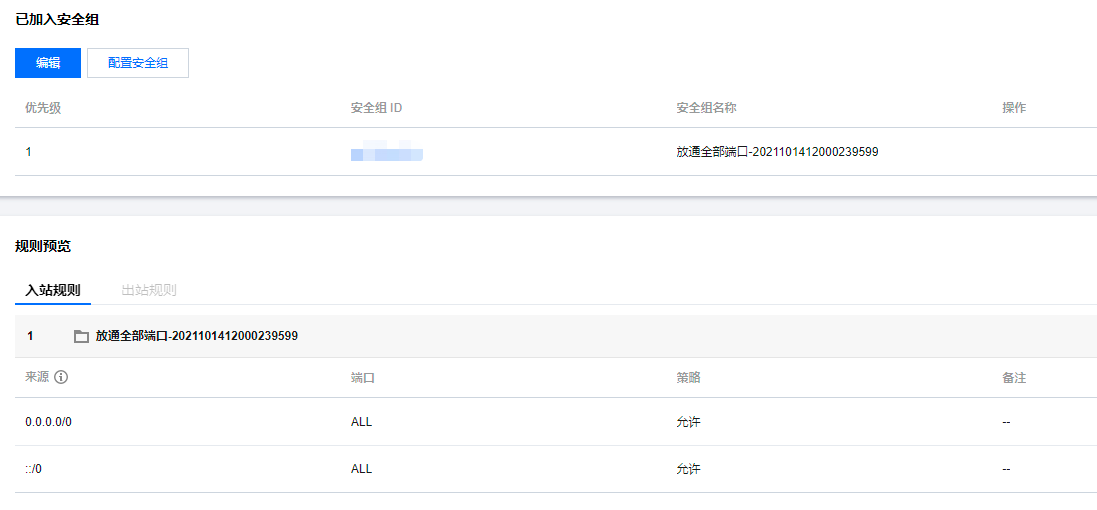前言
- 一、什么是配置虚拟主机
- 二、通过端口区分虚拟主机
- 三、通过域名区分虚拟主机
阅读本文需要安装Nginx:https://www.cnblogs.com/huangyi-427/p/9229645.html
一、什么是配置虚拟主机
就是在一台服务器启动多个网站
二、通过端口区分虚拟主机
复制一份静态页面
cd /usr/local/nginx
cp -r html html81
修改部分内容以示区分
vim /usr/local/nginx/html81/index.html

查看配置文件
more /usr/local/nginx/conf/nginx.conf
#user nobody;
worker_processes 1;
#error_log logs/error.log;
#error_log logs/error.log notice;
#error_log logs/error.log info;
#pid logs/nginx.pid;
events {
worker_connections 1024;
}
http {
include mime.types;
default_type application/octet-stream;
#log_format main '$remote_addr - $remote_user [$time_local] "$request" '
# '$status $body_bytes_sent "$http_referer" '
# '"$http_user_agent" "$http_x_forwarded_for"';
#access_log logs/access.log main;
sendfile on;
#tcp_nopush on;
#keepalive_timeout 0;
keepalive_timeout 65;
#gzip on;
server {
listen 80;
server_name localhost;
#charset koi8-r;
#access_log logs/host.access.log main;
location / {
root html;
index index.html index.htm;
}
#error_page 404 /404.html;
# redirect server error pages to the static page /50x.html
#
error_page 500 502 503 504 /50x.html;
location = /50x.html {
root html;
}
# proxy the PHP scripts to Apache listening on 127.0.0.1:80
#
#location ~ \.php$ {
# proxy_pass http://127.0.0.1;
#}
# pass the PHP scripts to FastCGI server listening on 127.0.0.1:9000
#
#location ~ \.php$ {
# root html;
# fastcgi_pass 127.0.0.1:9000;
# fastcgi_index index.php;
# fastcgi_param SCRIPT_FILENAME /scripts$fastcgi_script_name;
# include fastcgi_params;
#}
# deny access to .htaccess files, if Apache's document root
# concurs with nginx's one
#
#location ~ /\.ht {
# deny all;
#}
}
# another virtual host using mix of IP-, name-, and port-based configuration
#
#server {
# listen 8000;
# listen somename:8080;
# server_name somename alias another.alias;
# location / {
# root html;
# index index.html index.htm;
# }
#}
# HTTPS server
#
#server {
# listen 443 ssl;
# server_name localhost;
# ssl_certificate cert.pem;
# ssl_certificate_key cert.key;
# ssl_session_cache shared:SSL:1m;
# ssl_session_timeout 5m;
# ssl_ciphers HIGH:!aNULL:!MD5;
# ssl_prefer_server_ciphers on;
# location / {
# root html;
# index index.html index.htm;
# }
#}
}

可以通过配置多个server来配置多个虚拟主机
添加虚拟主机 将下面配置拷贝进去(与原有的server节点同级)
vim /usr/local/nginx/conf/nginx.conf
server {
listen 81;
server_name localhost;
location / {
root html81;
index index.html index.htm;
}
error_page 500 502 503 504 /50x.html;
location = /50x.html {
root html;
}
}
进入sbin目录
cd /usr/local/nginx/sbin
开机状态刷新配置文件
./nginx -s reload


三、通过域名区分虚拟主机
域名: 域名就是网站
DNS服务器: 把域名解析为IP地址 保存的就是域名和IP的映射关系
注意: 一个域名对应一个IP地址 一个IP地址可以被多个域名绑定
这里我准备了2个域名
www.hb218.cn www.hdcpa.cn
在阿里云上购买的 只有3-5天的使用期(可以续费) 总共花了2个大洋
买好域名之后需要在阿里云控制台 -> 云解析DNS -> 配置2个域名指向同一台nginx服务器(IP)
这里赞一下 马爸爸的阿里云平台啥都有 挺方便的
复制一份显示www.hb218.cn的静态页面
cd /usr/local/nginx
cp -r html html-hb218
修改部分内容以示区分
vim /usr/local/nginx/html-hb218/index.html

复制一份显示www.hdcpa.cn的静态页面
cd /usr/local/nginx
cp -r html html-hdcpa
修改部分内容以示区分
vim /usr/local/nginx/html-hdcpa/index.html

查看配置文件
more /usr/local/nginx/conf/nginx.conf
#user nobody;
worker_processes 1;
#error_log logs/error.log;
#error_log logs/error.log notice;
#error_log logs/error.log info;
#pid logs/nginx.pid;
events {
worker_connections 1024;
}
http {
include mime.types;
default_type application/octet-stream;
#log_format main '$remote_addr - $remote_user [$time_local] "$request" '
# '$status $body_bytes_sent "$http_referer" '
# '"$http_user_agent" "$http_x_forwarded_for"';
#access_log logs/access.log main;
sendfile on;
#tcp_nopush on;
#keepalive_timeout 0;
keepalive_timeout 65;
#gzip on;
server {
listen 80;
server_name localhost;
#charset koi8-r;
#access_log logs/host.access.log main;
location / {
root html;
index index.html index.htm;
}
#error_page 404 /404.html;
# redirect server error pages to the static page /50x.html
#
error_page 500 502 503 504 /50x.html;
location = /50x.html {
root html;
}
# proxy the PHP scripts to Apache listening on 127.0.0.1:80
#
#location ~ \.php$ {
# proxy_pass http://127.0.0.1;
#}
# pass the PHP scripts to FastCGI server listening on 127.0.0.1:9000
#
#location ~ \.php$ {
# root html;
# fastcgi_pass 127.0.0.1:9000;
# fastcgi_index index.php;
# fastcgi_param SCRIPT_FILENAME /scripts$fastcgi_script_name;
# include fastcgi_params;
#}
# deny access to .htaccess files, if Apache's document root
# concurs with nginx's one
#
#location ~ /\.ht {
# deny all;
#}
}
# another virtual host using mix of IP-, name-, and port-based configuration
#
#server {
# listen 8000;
# listen somename:8080;
# server_name somename alias another.alias;
# location / {
# root html;
# index index.html index.htm;
# }
#}
# HTTPS server
#
#server {
# listen 443 ssl;
# server_name localhost;
# ssl_certificate cert.pem;
# ssl_certificate_key cert.key;
# ssl_session_cache shared:SSL:1m;
# ssl_session_timeout 5m;
# ssl_ciphers HIGH:!aNULL:!MD5;
# ssl_prefer_server_ciphers on;
# location / {
# root html;
# index index.html index.htm;
# }
#}
}

可以通过配置多个server来配置多个虚拟主机
添加虚拟主机 将下面配置拷贝进去(与原有的server节点同级)
vim /usr/local/nginx/conf/nginx.conf
server {
listen 80;
server_name www.hb218.cn;
location / {
root html-hb218;
index index.html index.htm;
}
error_page 500 502 503 504 /50x.html;
location = /50x.html {
root html;
}
}
server {
listen 80;
server_name www.hdcpa.cn;
location / {
root html-hdcpa;
index index.html index.htm;
}
error_page 500 502 503 504 /50x.html;
location = /50x.html {
root html;
}
}
进入sbin目录
cd /usr/local/nginx/sbin
开机状态刷新配置文件
./nginx -s reload
大功告成 浏览器分别访问www.hb218.cn www.hdcpa.cn
请求
欢迎大家来学派吧投稿 欢迎加入我们学派吧QQ群 右上角

 阿里云CentOS/Windows服务器运维指南 | 阿里云腾讯云优惠活动 | 数据库优化教程-学派网
阿里云CentOS/Windows服务器运维指南 | 阿里云腾讯云优惠活动 | 数据库优化教程-学派网






































评论前必须登录!
注册